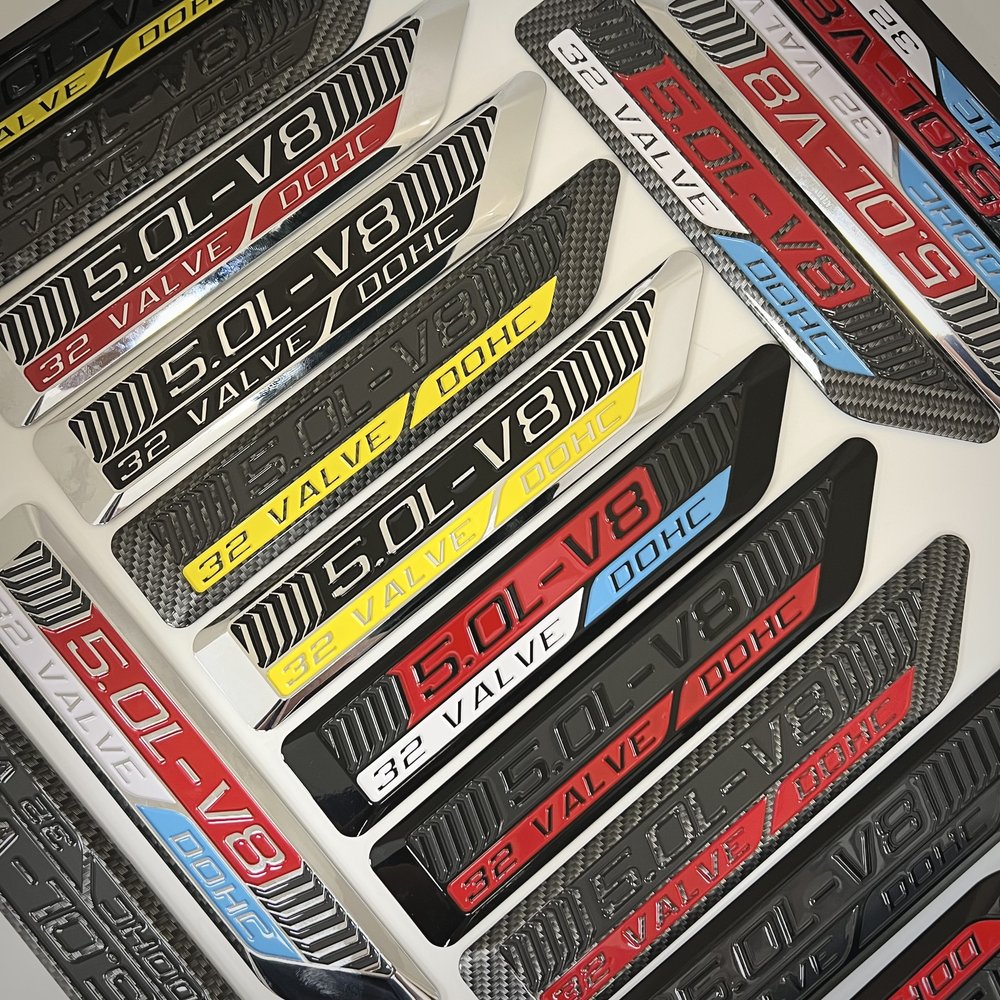From Idea to Development: Crafting a Special Custom Emblem
From Idea to Development: Crafting a Special Custom Emblem
Blog Article
Developing an Enduring Impression With Personalized Emblems: Layout Tips and Concepts
The development of a custom-made symbol is a critical action in developing a brand's identification, yet several ignore the subtleties that contribute to its efficiency. As we discover these critical parts, it comes to be clear that there is more to crafting an emblem than plain appearances; understanding these concepts can change your strategy to brand representation.
Comprehending Your Brand Name Identity
Recognizing your brand name identification is important for developing custom symbols that reverberate with your target market. Your brand name identity encompasses the values, goal, and character that define your organization. It functions as the structure for all graphes, consisting of personalized symbols. By clearly articulating what your brand name means, you can guarantee that the design components of your emblem reflect these core concepts.

Following, determine vital qualities of your brand, such as technology, originality, or integrity. These characteristics must guide the style procedure, influencing shapes, signs, and typography. A distinct brand identity not just help in creating an unforgettable symbol yet also promotes brand name commitment and acknowledgment. Ultimately, an emblem that really mirrors your brand name identity will produce a purposeful link with your target market, reinforcing your message and improving your general brand name approach.
Picking the Right Color Styles
Choosing the ideal shades for your custom-made symbol plays an essential function in communicating your brand's identity and message. Colors stimulate feelings and can dramatically affect assumptions, making it necessary to pick colors that resonate with your target audience. Begin by considering the psychological influence of shades; as an example, blue commonly communicates count on and professionalism and reliability, while red can evoke exhilaration and necessity.
It is likewise important to align your shade options with your brand's worths and market. A tech company might go with awesome shades, such as environment-friendlies and blues, to mirror advancement and dependability, whereas a creative firm may embrace vibrant and lively colors to display imagination and power.
Furthermore, consider the shade harmony in your layout. Utilizing a shade wheel can help you recognize comparable or corresponding colors that develop visual equilibrium. Objective for an optimum of three key colors to preserve simplicity and memorability.
Typography and Font Style Option
A well-chosen typeface can considerably boost the impact of your custom-made symbol, making typography and font style option crucial parts of the design procedure. The font ought to straighten with the brand's identity, sharing the suitable tone and message. For example, a modern sans-serif font style might stimulate a sense of advancement and simpleness, while a classic serif font style can connect practice and reliability.
When selecting a font, consider legibility and scalability. Your emblem will be used across various media, from calling card to billboards, so the font must remain clear at any kind of dimension. In addition, stay clear of extremely ornamental font styles that may interfere with the overall design and message.
Incorporating typefaces can additionally produce visual interest but calls for mindful pairing. Custom Emblem. An usual technique is to utilize a bold font for the main message and a corresponding lighter one for additional elements. Consistency is vital; restrict your selection to two or 3 font styles to keep a natural appearance
Integrating Meaningful Icons

As an example, a tree may stand for development and stability, while an equipment might signify advancement and precision. The trick is to make sure that the symbols reverberate with your target audience and mirror your brand's goal. Take part in conceptualizing sessions to gather and discover different concepts input from diverse stakeholders, as this can generate a richer range of over here alternatives.
When you have actually determined possible signs, examine their efficiency by sharing them with an emphasis group or carrying out studies. This comments can give insights right into how well the signs connect your intended message. Furthermore, consider exactly how these icons will work in combination with various other design aspects, such as shades and typography, to create a natural and impactful emblem. Eventually, the appropriate symbols can enhance acknowledgment and cultivate a stronger emotional link with your target market, making your brand name purposeful and remarkable.
Guaranteeing Adaptability and Scalability
Making sure that your personalized symbol is functional and scalable is essential for its effectiveness throughout numerous applications and tools. A properly designed symbol needs to keep its honesty and aesthetic charm whether it's shown on a service card, a web site, or a big banner. To accomplish this, focus on creating a design that is simple yet impactful, staying clear of detailed information that may end up being lost at smaller sized dimensions.

Evaluating your emblem in numerous styles and sizes is crucial. Analyze exactly how it carries out on different histories and in different environments to guarantee it stays recognizable and reliable. By prioritizing versatility and scalability in your style process, you will certainly produce a symbol that stands the test of time and effectively represents your brand name across all touchpoints.

Conclusion
Finally, the creation of custom-made emblems requires a critical method that integrates various layout elements, including brand name identity, color option, typography, and read what he said symbolic representation. Highlighting simpleness and scalability ensures that the emblem continues to be versatile across various applications, while purposeful symbols improve psychological resonance with the audience. By thoroughly incorporating these components, brands can grow a distinct identification that fosters recognition and leaves an enduring impact on consumers.
A well-defined brand identity not just help in developing a memorable emblem however likewise cultivates brand name loyalty and recognition. Ultimately, an emblem that really shows your brand name identification will certainly develop a meaningful connection with your audience, reinforcing your message and enhancing your general brand method.
Choosing the ideal shades for your personalized symbol plays a crucial duty in sharing your brand name's identification and message. By focusing on convenience and scalability in your layout procedure, you will certainly develop a symbol that stands the test of time and successfully represents your brand across all touchpoints.
In conclusion, the creation of custom emblems demands a critical strategy that integrates different style aspects, including brand name identification, shade choice, typography, and symbolic representation.
Report this page